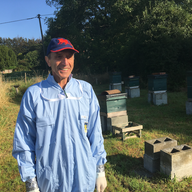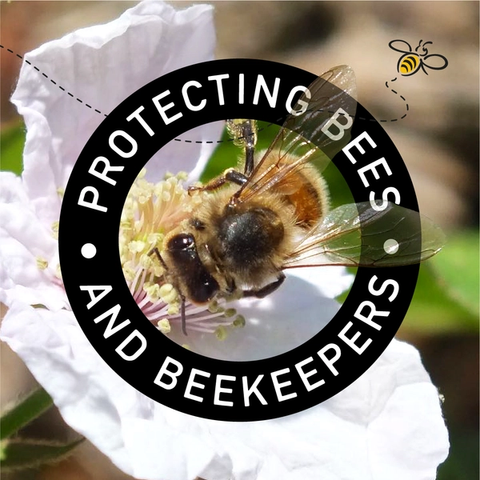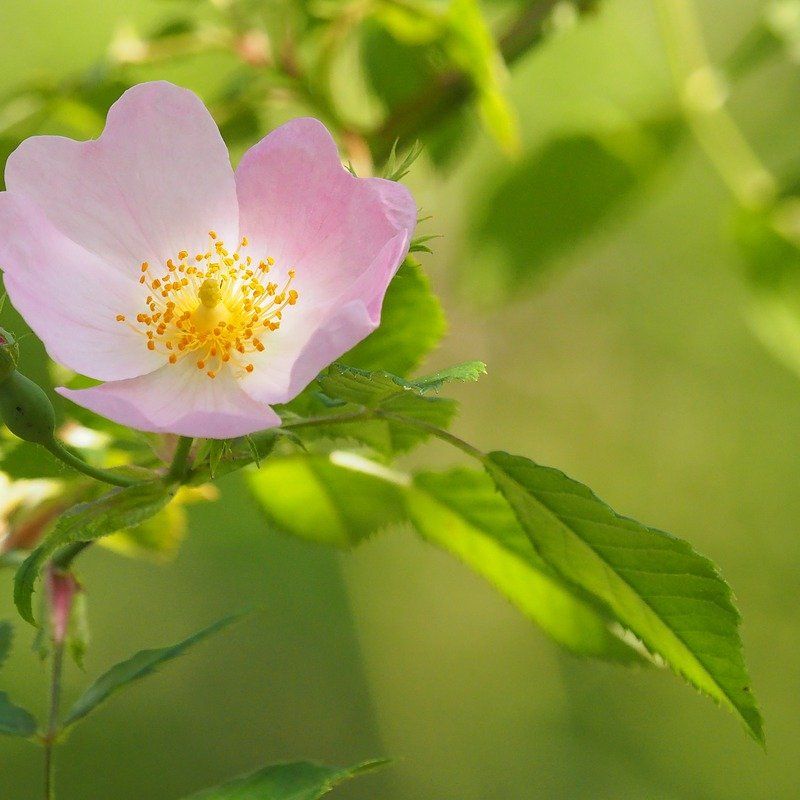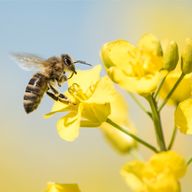
Bramble is one of our most common wild plants. It comes into bloom in late May, peaks in June, and continues into July. It lasts all summer and even into early autumn.
Bramble, or Rubus fruticosus, is something we take for granted. Indeed it is often considered a nuisance with its thorny stems taking over waste ground, creeping into gardens, and growing abundantly in hedges. It is not always welcome, in fact some botanists refer to it as a “thug”.
It is best known for producing blackberries, which are probably the one wild fruit that almost everyone in Britain will have tried. It’s common to see people picking blackberries in late summer and autumn. As everyone knows, blackberries are delicious fresh and are also ideal for jam making, crumbles and other puddings.
What is perhaps less well known is how important bramble flowers are as a source of nectar and pollen for honey bees and other insects. Through LASI’s ‘Sussex Plan for Honey Bee Health and Well Being’, which is kindly supported by Rowse Honey, we recently carried out two projects on bramble flowers and the insects that visit them. These were part of the PhD of Veronica Wignall, who completed her thesis in 2020 and will be awarded her PhD in 2021.
In one of these two projects, we carefully surveyed bramble flowers over two years at seven locations in Sussex to determine which insects visited them. Honey bees were the most abundant (60%) followed by bumble bees (17%). Other bees were only 3%. Hoverflies were 8%, butterflies 6%, and beetles 4%. There were also small numbers of other insects. Bramble flowers are bowl shaped and the nectar is “easy access”, collectable by insects with both short or long tongues.
By placing pollen traps onto 12 bee hives spread over four locations in Sussex we found that one third of all the pollen pellets collected by honey bees from late May to early August were bramble, peaking at 66–86% per location. It was the single most important pollen source.
One reason why so much bramble pollen was collected is that bramble is abundant and widespread. We showed this by surveying 60 locations in Sussex, each 200 x 200 metres. We found bramble growing in 90% of these. Basically, bramble is everywhere, living in both town and countryside. There is probably bramble within foraging range of every bee hive in Britain, not to mention within range of most flower-visiting insects.
There are thousands of native flowering plant species in Britain, some of which are rare and of conservation concern. One of the rarest is the Ghost Orchid, which is found in one wood and was not seen, even there, for several decades. Bramble is not in danger. It does well around humans and thrives in land we use and habitats we create including waste land and hedges. But that does not mean it is not of conservation importance. Its importance is in providing resources for other species, whether bees taking pollen and nectar, butterflies taking nectar, birds eating berries or nesting in bramble patches, or species that eat the leaves.
It is also a beautiful flower, situatied within the rose family. Take a careful look at a bramble flower and you will see the resemblance.
So when you see the bramble coming into bloom in late May and June, spare a thought for this under-appreciated plant, which is one of the most important sources of pollen and nectar for honey bees.

References
“Thug life: bramble (Rubus fruticosus L. agg.) is a valuable foraging resource for honeybees and diverse flower‐visiting insects”
https://onlinelibrary.wiley.com/doi/full/10.1111/icad.12436 🌍

